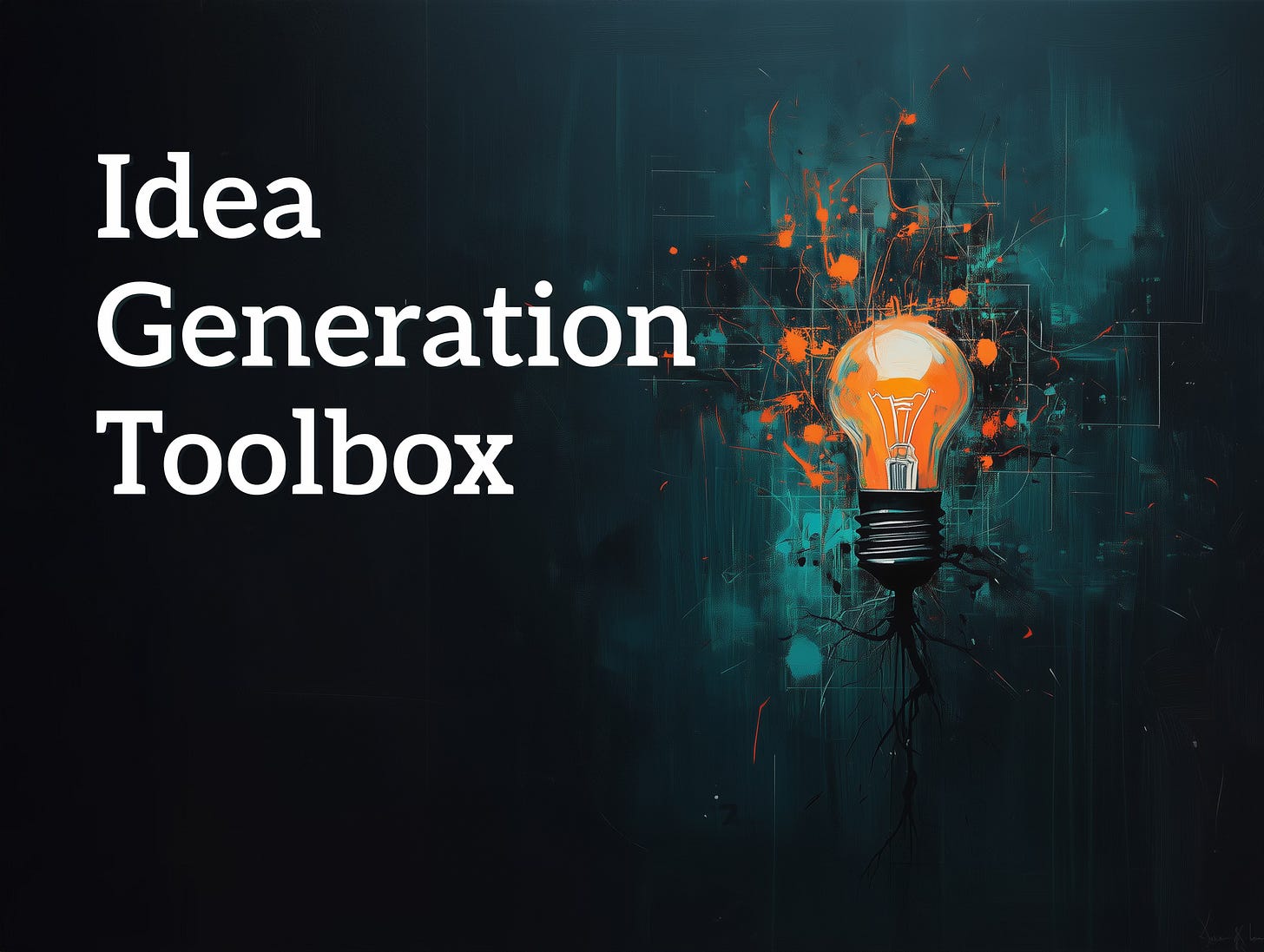The Idea Generation Toolbox
Turbo Charge Your Idea Engine
Ideas are valuable. Sure, ideas without execution are worth nothing. But a good idea is at the core of most successful projects. As an engineer working in advanced technology groups our whole business rested on the quality of our ideas. So, that’s why it’s so important to me that we establish an Idea Engine — a practice of generating ideas every day (I described that in this article here: The Idea Engine).
In this article we’re going to super-charge that practice with four top-notch idea generation strategies. These are useful for both your daily idea generation practice as well as for those situations where you need ideas on demand or are facing complex challenges where you need a breakthrough. The four strategies:
Change your brain state
Identify the problem (the real problem)
Constraints
Go where the ideas are
These aren't just theoretical concepts — they're the actual techniques used by prolific inventors, entrepreneurs, and innovators. Let's dig in...
Strategy 1: Change Your Brain State
Thomas Edison — one of the O.G. inventors — had this crazy trick: he’d nap in a chair holding a few steel ball bearings in his hand with a metal pan below. Just as he was drifting off to sleep, his fingers would relax dropping the bearings — BANG! — jolting him awake. In this semi-awake semi-asleep state Edison would write down whatever idea was on his mind. He was generally obsessing over a problem so often those ideas were just what he was looking for.
Edison was hacking his brain’t hypnagogic state. That sweet spot where the brain is starting to release itself — where barriers between different parts of the brain start coming down. Edison was catching his brain right at that moment — conscious enough to remember the ideas but loose enough to make new connections. Just enough for genius to slip through. (Maybe check with your downstairs neighbor before you make this practice part of your daily routine).
Josh Waitzkin has a similar trick. Josh, if you don’t know him, is one of the few people I can think of who has hit world-class levels in not one, not two, but three things — he’s an eight-time U.S. national chess champion, a two-time Tai Chi Chuan Push Hands world champion and a Brazilian Jiu Jitsu Black Belt (street cred off the charts, right?). Josh has a practice that takes advantage of these different brain states. He ends his work day thinking about his most important question. Getting really deeply immersed in it. Then he completely releases himself from it. Chills all evening. Gets a good sleep. Then first thing in the morning — “pre-input” as Josh calls it — he gets out his journal and starts brainstorming and writing about the problem…often big insights occur. His subconscious has been churning away all night, and in that early morning state he can grab those insights before his normal thinking patterns kick in. Josh describes it as “systematically opening the channel between the conscious and the unconscious mind.”
Keep reading with a 7-day free trial
Subscribe to Audacity Arc to keep reading this post and get 7 days of free access to the full post archives.


